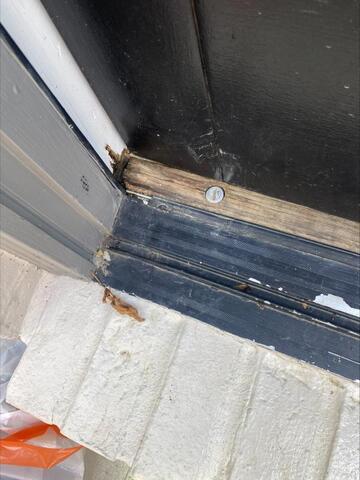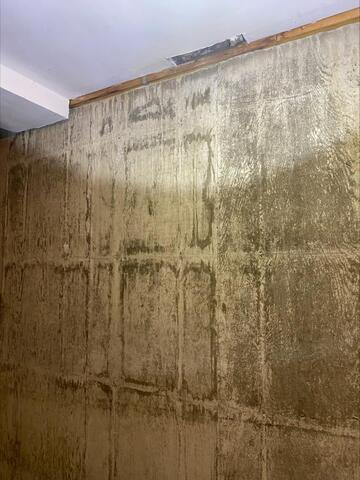Basement Waterproofing - Why Southwest-Facing Doors Are a Hidden Leak Risk in Greater Cincinnati Homes
Homes in Cincinnati and surrounding areas frequently experience accelerated weathering around southwest-facing exterior doors and sill plates. This is a combination of regional climate factors and construction details that homeowners often overlook, especially with the recent increase in rainfall. Our Inspector, Steve, likes to tell homeowners, "A little bit of caulk goes a long way in these areas."
Southwest Exposure Means More Sun and Storms
The southwest side of homes in the Northern Hemisphere, including Cincinnati, endures the most intense afternoon sun exposure throughout the year. This results in:
-
Faster deterioration of caulk and paint due to prolonged UV damage.
-
Warping and drying out of trim and door frames, which compromises seals.
-
Frequent exposure to prevailing southwest winds and storms, which bring rain, hail, and wind directly to this side of the house, accelerating wear and potential water intrusion.
-
During colder months, freeze-thaw cycles occur more frequently on this sun-exposed side, causing repeated expansion and contraction of materials. This cycle accelerates cracking and breakdown of caulking, paint, and even wood components around doors.

This photo, taken by our Inspector Steve in Florence, KY, shows a southwest-facing doorway with visible weather damage—typical wear from sun, wind, and moisture exposure in our region.
The Role of Recent Increased Rainfall
With Cincinnati experiencing above-average rainfall recently, moisture exposure has intensified. When combined with the weathering effects described above, this leads to:
-
Water infiltration behind failing sealants.
-
Increased risk of rot in trim and framing, particularly near doors.
-
Higher chances of mold growth and damage to interior finishes.

This basement photo, also taken by our Inspector Steve, shows water damage caused by leaks from the same southwest-facing doorway pictured earlier—demonstrating how exterior damage can lead to serious interior problems if not repaired promptly.
Why Sill Plates Need Special Attention
One frequently overlooked vulnerability is the sill plate—the bottom horizontal framing member where the house’s walls meet the foundation. Proper protection here is essential because:
-
If soil or mulch is piled up against or above the sill plate, it traps moisture against the wood framing.
-
This trapped moisture causes the wood to absorb water, leading to rot, mold, and pest intrusion, especially termites and carpenter ants.
-
In Cincinnati’s climate—with its seasonal freeze-thaw cycles and recent heavy rains—exposed sill plates touching soil face accelerated degradation.
Building codes typically require a minimum of 6 inches clearance between the soil grade and the bottom of any wood framing or siding to prevent these issues. Maintaining this gap, along with proper grading to divert water away from the foundation, is critical to keeping the structure sound.
Practical Steps to Protect Doors and Sill Plates
To reduce weather damage and extend the lifespan of southwest-facing doors and sill plates, homeowners should:
-
Regularly inspect and replace cracked or failing exterior caulk around doors and trim.
-
Ensure that soil and mulch are kept at least 6 inches below the sill plate and siding.
-
Clear debris that may trap moisture or pests near door bottoms and sill plates.
-
Consider adding flashing or metal trim where appropriate to improve waterproofing.
our service area
We serve the following areas
- Burlington
- Covington
- Erlanger
- Florence
- Ft Mitchell
- Glencoe
- Hebron
- Independence
- Morning View
- Petersburg
- Sparta
- Union
- Verona
- Walton
- Warsaw
- Addyston
- Ansonia
- Arcanum
- Camden
- Cleves
- College Corner
- Eaton
- Eldorado
- Fairfield
- Greenville
- Harrison
- Hollansburg
- Lewisburg
- New Madison
- New Paris
- New Weston
- North Bend
- Okeana
- Oxford
- Rossburg
- Somerville
- Union City
- West Alexandria
- West Elkton
- West Manchester


